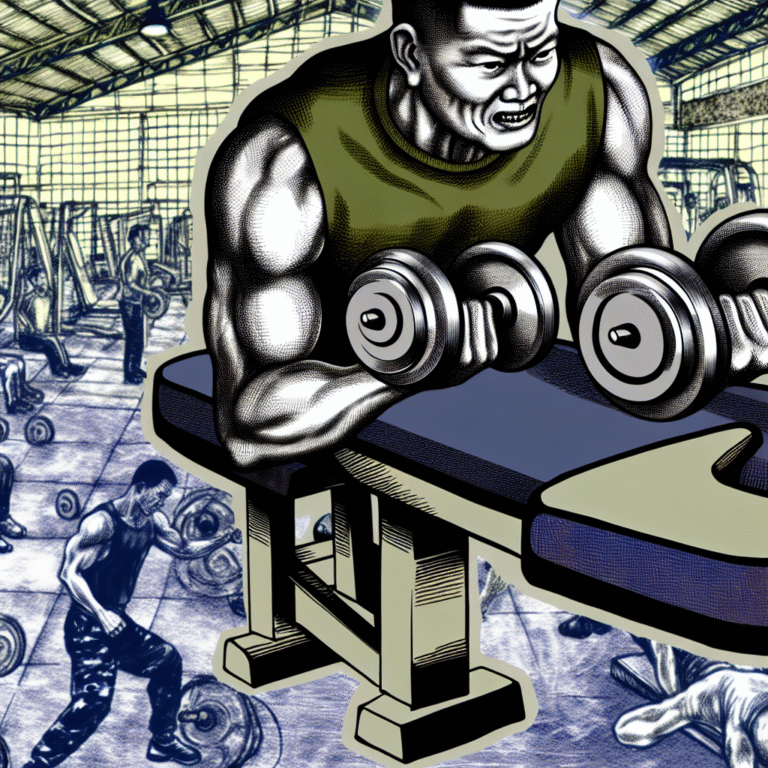Top 3 Takeaways on the Incline Dumbbell Bench Press
Master the Mind-Muscle Connection: Not feeling your chest when doing the incline dumbbell bench press? Spoiler alert: it’s all about focusing on where you’re supposed to feel it. We’ll dive into techniques to enhance that mind-muscle connection.
Stability is Key: If your dumbbells are shaking like they just chugged espresso, you’re not alone! This article gives you tried-and-true tips to improve your stability and overall form.
Fundamental Advanced Techniques: Whether you’re a beginner or a seasoned lifter, understanding the incline dumbbell bench press’s quirks will make all the difference in your training regimen and growth.
The Incline Dumbbell Bench Press: More Than Just a Chest Workout
Let’s get real—it’s easy to feel overwhelmed walking into a gym, especially as a beginner trying to figure out what on Earth to do with those ridiculous-looking dumbbells. If you’ve wandered into the world of the Incline Dumbbell Bench Press, chances are you’ve experienced some issues that could make you question your existence. Feeling like your chest isn’t getting enough love, or those dumbbells are more wobbly than your 8th-grade crush? Welcome to the club!
In this article, we’re diving into the incline dumbbell bench press extravaganza! Think of it like a treasure hunt, but instead of gold, we’re searching for chest-building gains, stability tips, and possibly a little bit of sanity.
What Is the Incline Dumbbell Bench Press?
Okay, for those who’ve been living under a rock: the Incline Dumbbell Bench Press is a strength training exercise that targets your upper chest, shoulders, and triceps. It’s like the cool kid who sits at the front of the class: everyone wants to know them, but not everybody dares to approach.
Why Choose Incline?
- Upper Chest Development: It focuses on your upper pecs, which can be neglected when doing flat presses.
- Shoulder Stability: Great for building shoulder strength and avoiding injuries.
- Versatility: You can vary the incline to target different areas.
But hey, let’s not kid ourselves. The incline dumbbell bench press can feel a bit off at first, especially if you’re struggling with those pesky feelings of instability and lack of chest engagement. So, let’s dig into the common problems and how you can conquer them once and for all!
Problem 1: You Don’t Feel Your Chest
Doesn’t it just suck when you’re doing an exercise designed to pump your pecs, but you feel more like you’re working your wrists instead? Here’s the breakdown of what’s going on and how you can turn that around.
Why You Might Not Feel Your Chest
- Poor Form: Let’s start with the fundamentals. If your form is off, chances are you’re engaging the wrong muscles. It’s like trying to use a toaster as a microwave—totally ineffective.
- Lack of Mind-Muscle Connection: Are you actually thinking about your chest while lifting? If not, you might as well be lifting a bag of potatoes.
- Incorrect Weight Selection: Using weights that are too light or too heavy can affect how you engage your muscles.
Fixing It: Get in Touch with Your Chest!
Focus on Form:
- Keep your elbows at about a 45-degree angle to your torso.
- Don’t lock your elbows at the top—keep a slight bend to maintain tension.
- Imagine you’re trying to squeeze your pecs together at the top of the rep.
Use Visual Cues:
- Watch yourself in a mirror, or better yet, record your workouts. You might discover you’re doing the ‘flail of despair’ instead of a controlled press.
Lighten Up A Bit:
- Go for a lighter weight with better form to really feel your chest engaging. The goal here isn’t to impress anyone; it’s to master the movement.
Activate the Chest Pre-Workout:
- Try performing push-ups or band pull-aparts before hitting the incline dumbbell bench press. This will warm up those chest muscles for action.
Concentration Curls!
- Wait, what? No, this is still about the dumbbell bench press. But seriously, focus on what you’re trying to achieve. Think of your pecs working with every rep, visualizing them contracting as you press the weights up.
Problem 2: The Flapping Dumbbell Dilemma
So there you are, laying on the bench, thinking you’re about to crush this workout. But hold up! Is your dumbbell shaking like it just heard a bad joke? This instability can be frustrating and downright dangerous if you’re not careful. Let’s break that down.
Why Are Your Dumbbells Shaking?
- Weak Stabilizer Muscles: Your body has these little muscles working hard to stabilize the movement. If they’re not up to par, you get the shake-fest!
- Improper Grip: Maybe you’re gripping those dumbbells like they’re capes that’ll save you from an oncoming storm. Ease up a bit, and make sure your hands are positioned correctly.
- Poor Bench Positioning: Is your bench inclined at the right angle? Too steep or shallow can alter your center of gravity.
Fixing It: Taming the Wobble
Engage Your Core:
- Keeping your core tight throughout the movement contributes to stability. Think of it like an anchor. No anchor, no stability!
Foot Placement:
- Plant those feet firmly on the ground. This will help you create a stable base. No more “dumbbell noodle arms!”
Balanced Weight Distribution:
- Don’t overload one side of the dumbbell. Ensure each hand has an equal amount of weight to hold. You wouldn’t want to drive a car with one flat tire, right?
Try a Neutral Grip:
- Sometimes switching to a neutral grip (palms facing each other) can enhance your stability. Who doesn’t love a good status quo shake-up once in a while?
Stronger Stabilizers:
- Incorporate exercises that strengthen your shoulder and core muscles—think planks, push-ups, and shoulder raises. You’ll thank your future self later!
Getting the Most Out of the Incline Dumbbell Bench Press
Now that we’ve tackled the common problems like a seasoned pro, let’s explore how to maximize your gains with this exercise.
Variations to Spice Things Up
- Single-Arm Press: Doing one rep at a time forces your core to work harder to stabilize.
- Incline Dumbbell Flyes: Switch it up! This will target your chest differently and engage those muscles even more.
- Changing Incline Angles: Experiment with varying angles (30 degrees, 45 degrees, or even 60 degrees) to target your chest in different ways.
Adding it to Your Routine
Sample Routine:
| Exercise | Sets | Reps |
|---|---|---|
| Incline Dumbbell Bench Press | 3 | 8-12 |
| Pull-Ups | 3 | 6-10 |
| Incline Dumbbell Flyes | 3 | 10-15 |
| Skull Crushers | 3 | 10-15 |
| Plank | 3 | 30-60 seconds |
This combination not only hits the chest but engages stabilizing muscles while keeping the workout fresh—just how we like it!
Final Thoughts: Your Journey Awaits
The incline dumbbell bench press is not just another exercise; it’s a rite of passage in the lifting world! Whether you’re hammering out reps or just figuring it all out, know that everyone starts somewhere.
Feeling that mind-muscle connection and building stability takes time and practice, so don’t beat yourself up if you struggle at first. Celebrate small victories! Whether it’s feeling your chest work or not wobbling like a newborn deer anymore, you’re on the right track.
Keep experimenting, stay open to tweaking your form, and don’t forget to have a little fun along the way. Your chest (and maybe even your future self) will thank you!
Incline Dumbbell Bench Press, Mind-Muscle Connection, Stability, Core Engagement, Strength Training, Upper Chest Development, Dumbbell Variations, Workout Routine, Strength Gains, Exercise Tips.





